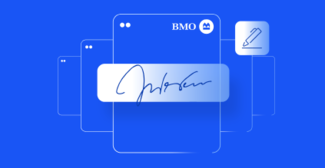OneSpan Sign How To: Customizing Emails

Recently, there has been a few questions in the Developer Community Forums about the emails that are sent out to end users and I thought this would be the perfect opportunity to address this. With OneSpan Sign, you have the full capability of customizing these emails. For example, you can customize the text in the email, disable specific email templates, use a custom SMTP server, etc. In this blog, I will give you a complete description of what you can customize with regards to emails.
Sending Emails from OneSpan Sign
First of all, please note that email customization cannot be achieved through the API/SDKs. You will have to send our support team a request for this at [email protected]. Currently, there are three ways of sending emails to end users. You can either send them from the OneSpan Sign server, a custom SMTP server, or using the OneSpan Sign server with DomainKeys Identified Mail (DKIM) signing. The default setup is using the OneSpan Sign server. This requires no changes on your part. If you are looking to use an SMTP server, you will have to provide support the following parameters:
{
"email.smtp.host": "",
"email.smtp.port": "",
"email.username": "",
"email.password": "",
"email.smtp.ssl": "false/true",
"email.smtp.tls": "false/true"
}
It is important to note that if you choose to use SMTP, you will have to handle all bounced emails on your end. Lastly, you can use the OneSpan Sign server with DKIM signing. DKIM involves using a private domain key to encrypt your domain’s outgoing mail headers, and adding a public version of the key to the domain's DNS records. Recipient servers can then retrieve the public key to decrypt incoming headers and verify that the message does indeed come from your domain and hasn't been modified along the way. Setting up DKIM with OneSpan Sign signing is a paid service and will require some delay to get started.
Email Templates
The following is a complete list of email templates you can customize:
- email.activate
- email.notify
- email.complete
- email.expire.warning
- email.expire
- email.decline
- email.opt.out
- email.complaint
- email.bounced
- email.ooto (out of the office)
- email.reassign.newSigner
- email.reassign.sender
- email.attachment.rejected
- email.remind.signer
- email.evidence.summary
- email.account.invitation
- email.lock.signer
- email.login.lockout
- email.unlock.signer
- email.forgot.password
- email.kba.failure
- email.notify.mobile
- email.ofac.event
- email.callbackFailure
The email.activate template, for example, is the automatic email sent to all signers in a package after it has been sent for signing. If a package is configured with a signing order, only the first signer will receive an invitation when the package is initially sent. The second and following signers will receive an invitation email when the previous signer has completed signing.
Also, for each of these email templates above, a number of variables is available for you to customize, such as $RECIPIENT_NAME, $RECIPIENT_ROLE, $PACKAGE_NAME, $LINK_URL, etc. You can also turn on and off individual email templates. For a complete description of each email template and variables, head over to our documentation. It is also important to note that email templates are on an account level and not on a package level. In other words, any customization will affect all future created packages. Email template customization cannot be done for specific packages.
If you have questions regarding this blog or anything else concerning integrating OneSpan Sign into your application, visit the developer community forums:
https://developer.onespan.com. That's it from me. Thank you for reading! If you found this post helpful, please share it on Facebook, Twitter, or LinkedIn.
Haris Haidary
Junior Technical Evangelist
LinkedIn | Twitter








